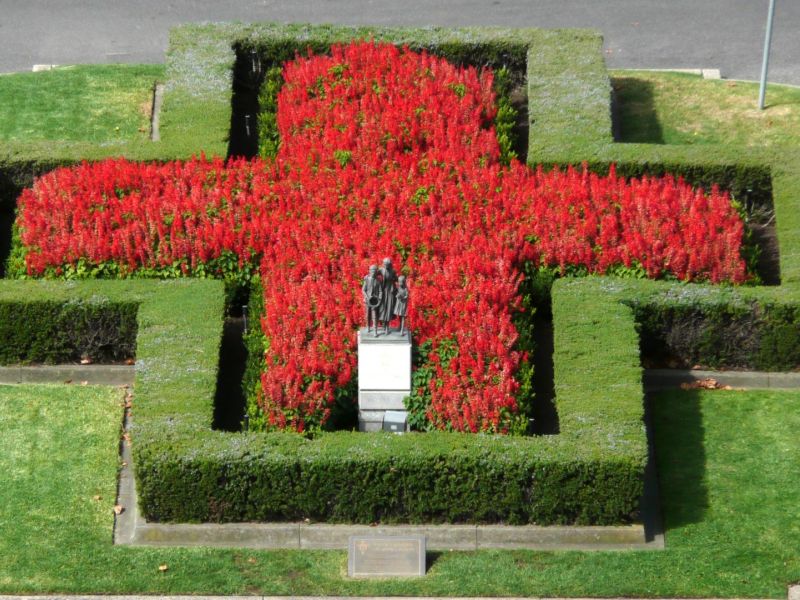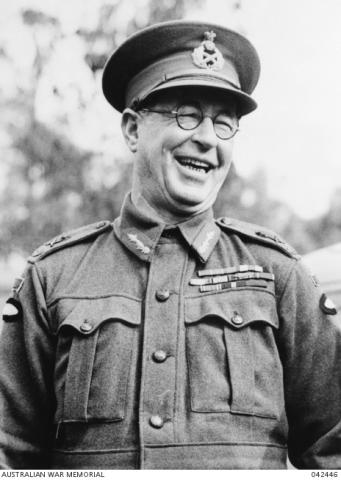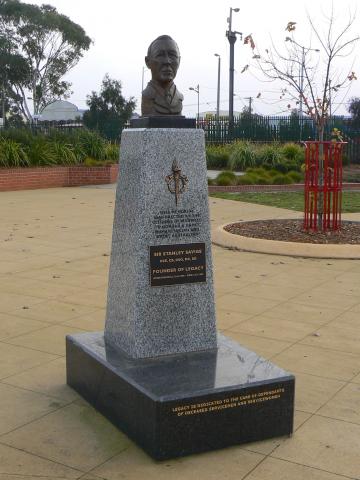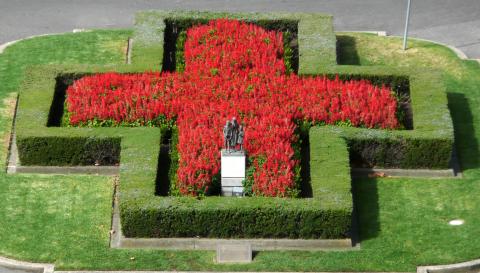A Legacy worth preserving

Stanley George Savige was born in Victoria in 1890. He enlisted in the Australian Imperial Force in March 1915 and served with 24 Battalion at Gallipoli, and was commissioned as a 2nd lieutenant prior to the evacuation, during which he was part of the final holding party at Lone Pine. In France, he saw service with 6 Brigade Headquarters as well as his battalion and was awarded the Military Cross for gallantry at the second battle of Bullecourt.
In 1918, Savige became one of a small number of Australians selected for service with Dunsterforce in Persia, commanded Urmia Force, and was awarded the Distinguished Service Order. Between the wars, Savige continued his military career in the Militia, and by 1939 he held the rank of colonel. When the Second Australian Imperial Force was raised, he was placed in command of 17 Brigade, which he led through campaigns in Libya, Greece, and Syria before being promoted to command 3 Division (Militia) in New Guinea.

In 1944, he was appointed General Officer Commanding 2 Corps, in command of forces engaged in the campaign on Bougainville, and accepted the Japanese surrender there in September 1945. Lieutenant General Savige was knighted in 1950 and died in 1954.
He is widely remembered for his efforts between the wars in founding the Legacy Clubs (which he modelled on the Remembrance Club formed in Hobart by his friend and former commander Sir John Gellibrand in 1923) to care for the dependants of deceased servicemen and ex-servicemen. These clubs grew into a nation-wide organisation which, by the time of Savige's death, was supporting over 80,000 widows and children.
Australia’s iconic fundraising campaign, Legacy Week, runs from 1 to 8 September. The campaign raises much-needed funds for Legacy, which supports the families of incapacitated and deceased veterans.
Sir Stanley Savage
On 31 August 2006, a war memorial was erected in Sir Stanley Savige’s home town of Morwell in Victoria. The memorial takes pride of place in the town square, now known as Legacy Square, between Commercial Road and Princes Drive.

The inscription on the back of the memorial reads:
A Distinguished Service Order (DSO) was awarded to Captain Stanley Savige, for conspicuous gallantry and devotion to duty during the retirement of Assyrian refugees from Sain Keleh to Tikkan Tappah between 26th and 28th July 1918; also at Chalkaman on the 5th and 6th August 1918.
He was in command of a small party sent to protect the rear of the column of refugees who being hard pressed by the enemy. By his energy, resource and able dispositions the hostile troops, many of whom were mounted, were kept at a distance, although in greatly superior force. He hung on to position after position until nearly surrounded, but on each occasion extricated his command most skilfully.
His cool determination and fine example under fire inspired his men and put heart into the almost panic stricken refugees, thereby averting what might have been a very serious situation.
Legacy Garden of Appreciation
From a population of less than five million, more than 400,000 Australians enlisted for service during the First World War, and more than 330,000 served overseas. Of those, 62,000 wouldn’t make it home.
 Barely a family or community was left untouched, and when the war finally ended after the signing of the Armistice on 11 November 1918, communities in nearly every Australian city and town erected memorials to honour their dead and recognise the service and sacrifice of those who had served their country.
Barely a family or community was left untouched, and when the war finally ended after the signing of the Armistice on 11 November 1918, communities in nearly every Australian city and town erected memorials to honour their dead and recognise the service and sacrifice of those who had served their country.
For families and communities that had been deeply scarred by war, the memorials were an important way of expressing their grief. For many, they took on special significance, often becoming surrogate graves for soldiers whose bodies were buried in war cemeteries in foreign lands or were missing.
The Legacy Garden of Appreciation at the Shrine of Remembrance in Melbourne is a living tribute to the generous support of Victorians for the work of Legacy. It features a sculpture of a widow and her children, symbolising the work of Legacy caring for widows and children of veterans.
Surrounding the sculpture is a garden in the shape of a cross. Inside the cross are Flanders Poppies which bloom around November and were seeded from Villers-Bretonneux in France.
Albury Legacy Memorial
Out the front of Legacy House in Albury, New South Wales, is a war memorial dedicated to the 80th anniversary of Legacy and its commitment to assisting families affected by war.
The war memorial features the silhouette of a family with one child holding a wreath. The wreath of laurel is represented in the Legacy logo and symbolises remembrance of those who gave their lives for their country.
On the plaque is the Legacy torch, described as “the undying flame of service and sacrifice handed to us by our comrades in war who have passed on”.
To find out how you can support Legacy, visit their website: https://www.legacy.com.au/GetInvolved